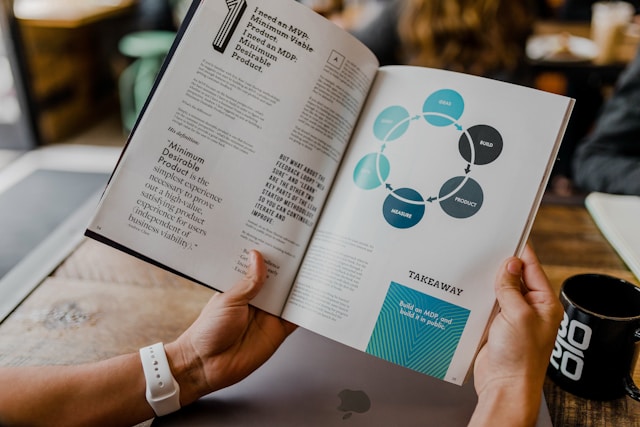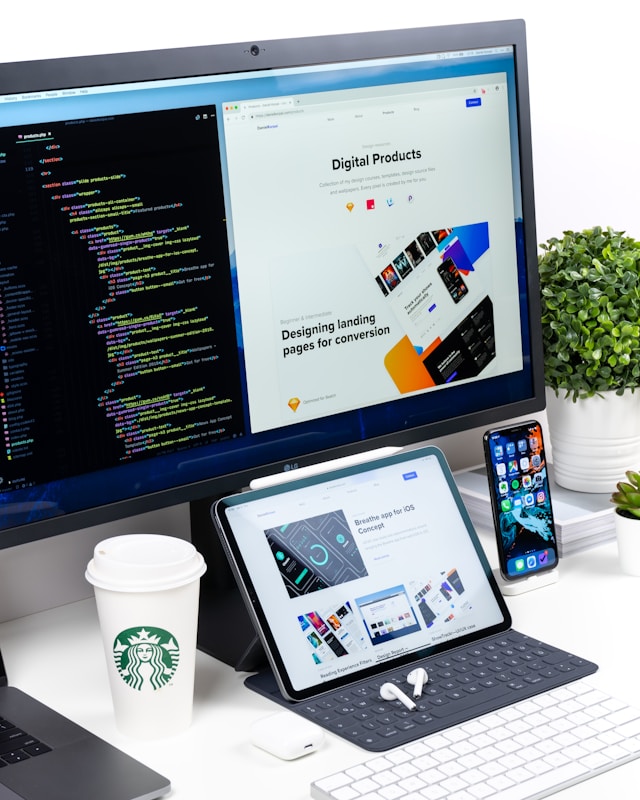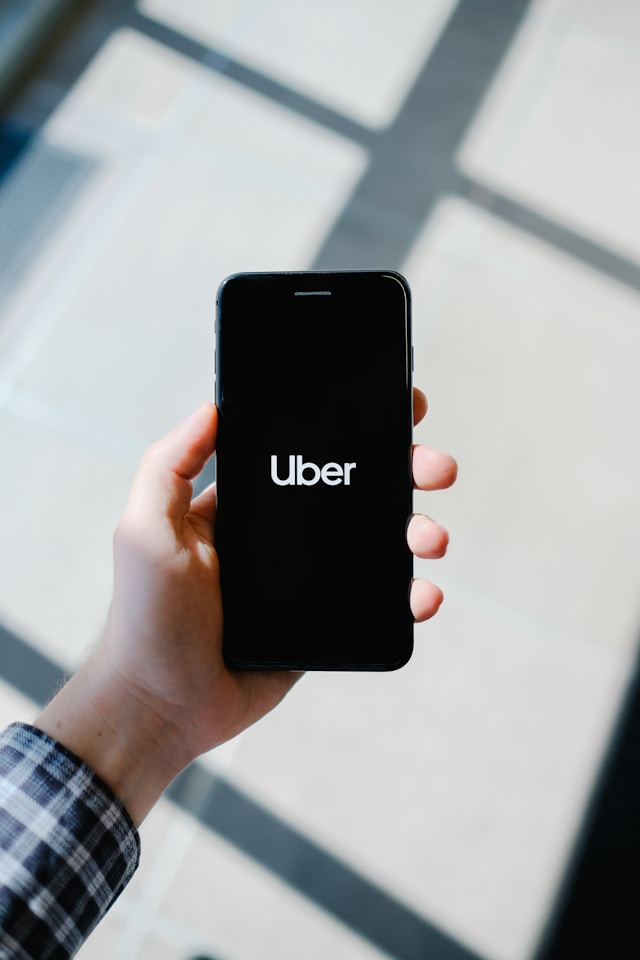Product design is expensive. We all know that. Getting all the resources you need for a business launch takes both time and money. As a result, you can rarely create a flawless product right from the start. Enter the minimum viable product (MVP).
So, what is it? How does it factor into UX design?

What Is a Minimum Viable Product?
A product with enough features or functionality to draw in early adopters is minimally viable. In UX, an MVP is a functional digital product you can present to users with pride.
So, what is a minimum viable product for? Gathering user feedback is the primary object. It’s an essential step in creating new products because it means you can quickly iterate and improve. Without investing too much money, you can transition from a product idea to the real thing. This is agile product development–building on things slowly as you learn.
Why Use the MVP Approach?
Eric Ries introduced the concept of the MVP in his ideas about Lean Startups. This approach emphasizes data-driven design and creating something customers really want.
Ries describes MVPs as a way of learning about customers with the least effort. You can produce something that’s good enough for real users and release it to the market. Then, users feedback, and you improve on the original idea with real data.
This way, you can:
- Test the product before committing a large budget to its full development.
- Learn what resonates with your target audience.
- Release as quickly as possible.
It’s a great way to limit the resources you spend on a product that might need adjustments.
MVP vs. Prototype
So far, this might sound a bit like a prototype. After all, a prototype is also a representation of the final product. Depending on its level of fidelity, it might even have clickable, working elements. But, having working interactions doesn’t make a prototype the same as an MVP.
Both things are useful for user testing and gaining feedback. They can both help you test and try different ideas.
However, when it comes to MVP vs. prototype, you need to be careful. You can actually sell an MVP, whereas a prototype is not that usable. A prototype helps you test your user interface and UX. Meanwhile, an MVP tests your business model and value proposition.

The Stages of MVP Development
Developing an MVP takes several steps. You can’t just design a product with minimal features and launch it. Instead, MVP development is a careful process that requires some initial research and insights.
These five steps will help you figure out your MVP.
1. Identify Customer Pain Points
Everything in UX starts with a simple idea. However, you can’t ideate well if you don’t understand your audience. So, like everything else, MVP development begins with market research.
At this point, user research looks like it does for other aspects of UX. You can perform a mix of quantitative and qualitative analysis, developing user personas to dive into your audience’s needs.
Put yourself in your users’ shoes. Who are they? What do they need? Empathizing with them will help you with user-centered design. Only when you know what you’re trying to solve can you decide which features are most important.
2. Align It with Your Business Goals
Yes, UX is about your users. However, it’s fruitless unless you align your design with your business goals. The MVP needs to serve your users, but you can’t do that if you overspend.
Think about your goals. Are you aiming for a product that produces a certain revenue? Are you trying to attract an entirely new audience? Are you attracting users from an adjacent market to an existing product?
Knowing what you’re trying to do will also help you determine the key features for your MVP.
3. Describe the Competitive Landscape
Next, you need a market analysis. If your product is innovative, your competition may be few. However, you still need a unique selling proposition (USP). This holds even more true if you’re entering or operating in a competitive marketplace.
What makes your MVP stand out? How can you do whatever you’re doing better than the competition?
4. Create a Plan of Action
Now, you can create your action plan. Armed with market research, competitor analysis, and measurable goals, you can really hone your MVP. This is where the balancing act comes in.
Some creators refer to it as a ‘Minimum Marketable Product.’ It needs to be something your users actually want to buy. At the same time, you need to remember what the V stands for: viable. It needs to be something you can produce to a high standard within your resources.
When you know what to create, you can start the process of ideating, wireframing, and then building.
5. Test the MVP
Testing is a crucial part of development, even for an MVP. Find a beta group of testers. This can be a group of internal team members who test the basic technology.
User testing will help you hone the design along the way, ensuring your MVP is actually usable. Remember, this isn’t a prototype. It needs to have full functionality.
6. Launch
Once you’ve passed the testing stage, you’re ready. You can now launch the MVP to your customer base to initiate the feedback loop.
Of course, your job isn’t done. It’s only just beginning, really, because now you start to collect feedback, iterating until you have something special.

MVP Testing
Testing in the early stages is crucial. It can spell the difference between success and failure. Essentially, early MVP testing tells you how users will engage with your product. Not only will you learn if it works, but you’ll also learn how users perceive it.
The goal is to validate if the core functions work and if your users find the product useful or engaging.
Why Is MVP Testing Important?
These are all reasons to test carefully.
- Validates core features: Your MVP is useless if it doesn’t work. Proper usability testing can ensure users can interact with the product.
- Reduces cost: In the long run, testing reduces costs. This is because you can catch issues early and address them instead of fixing big problems later.
- Saves time: It even saves time, too, for the same reasons. It takes longer to go back to square one and build from scratch than it does to fix a bug.
- Improves the product: Qualitative feedback can give you tangible ways to improve. As a result, you can hone your product before release.
- Provides data: Quantitative data, meanwhile, is useful down the line. Data-driven design will help you to grow your business effectively.
- Minimizes risk: Validating your components is always ideal. When you validate, you know that the product meets your users’ expectations.
With all this in mind, how do you test your MVP?
1. Identify Key Metrics
Without knowing what you’re searching for, testing is impossible. Choose the metrics you want to measure to gauge your MVP’s success. You might look at engagement rates, feature usage, or usage time, and conversion rates.
At this point, you also need to figure out the tools you need. The right software for the job depends on exactly what you’re measuring. For feature usage, for example, heat maps are what you need. Meanwhile, for customer feedback, you’ll need survey software and a skilled researcher.
Notably, whichever metrics you decide on should directly correlate with your goals.
2. User Testing
Now for the fun part–the actual testing. Make sure you follow all standard procedures to produce accurate and reproducible results. Encourage your testers to provide honest feedback while also collecting quantitative data where possible.
3. Analyze
Data is useless if you don’t analyze it. Take a careful look at all your results and evaluate them through the lens of your key metrics. Think about whether the MVP is performing as you expected or if there are some results you didn’t anticipate.
4. Iterate
Finally, you can start to hone your design. Think about the insights you gathered and how your MVP relates to your users. If there were points of friction, how can you remove them? If your testers loved a certain feature, can you make it more prominent?
Since it’s an iterative process, you might need to repeat this a couple of times as you perfect your features.

MVP Examples
Some of your favorite products once had MVPs. It’s hard to imagine giants like Amazon with minimum viable products, but everyone has to start somewhere. Here are three examples of MVPs.
Amazon
Amazon sells everything nowadays, but this wasn’t always the case. When Jeff Bezos launched the site in the early 90s, it sold only books. A bookstore was Amazon’s minimum viable product, which he could run from his garage.
Selling only books allowed Bezos to collect customer insights and figure out what customers wanted. Then, armed with this data, he slowly grew his business to what it is today. Now, it turns over $500 billion in net sales each year.
Airbnb
Airbnb’s founders validated their idea using their own apartment. They built a minimalist website for renting out apartments, then took photos of and listed their own place. They received several inquiries in no time. As a result, they both knew there was a market for their product and had first-hand experience using it.
Uber
Garret Camp and Travis Kalanick didn’t create the entire Uber app right away. They started with UberCab, an iPhone-only SMS service in San Francisco. This was, first of all, cheaper to do than building an entire app. Secondly, limiting it to just one city allowed it to hone the product before expanding its services.
Over the years, they have iterated and perfected Uber into the popular ride-sharing app it is today. Now, it operates way beyond its MVP. In some places, you can order an Uber helicopter–that certainly wasn’t part of the MVP!
Get Inspired With Page Flows
Building a minimum viable product is a great method for growing a startup from scratch. Nevertheless, you’ll still need design inspiration to create your MVP. So, why not learn from proven products?
Page Flows is a helpful resource for finding UX/UI design ideas. Get started today to access our growing library of user flow recordings and finally stay up-to-date with current design trends.





